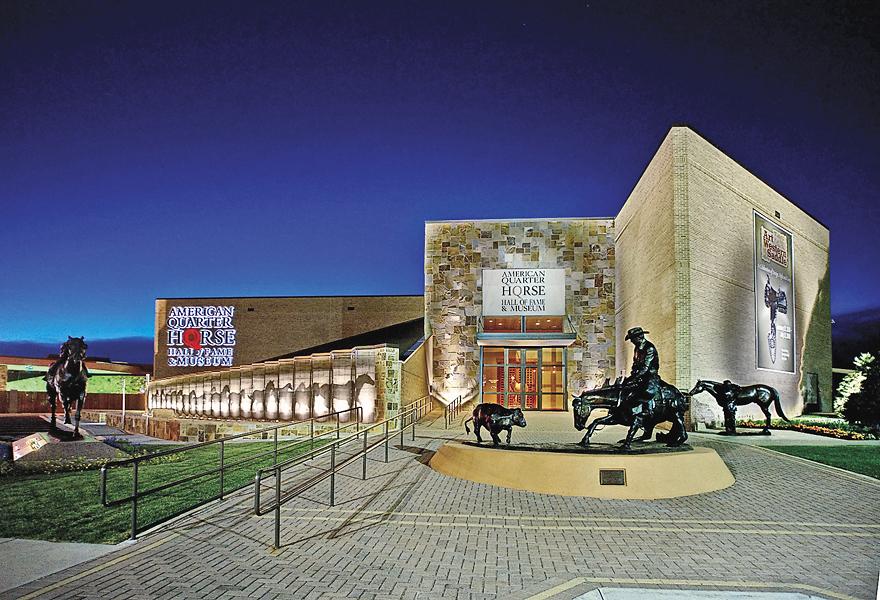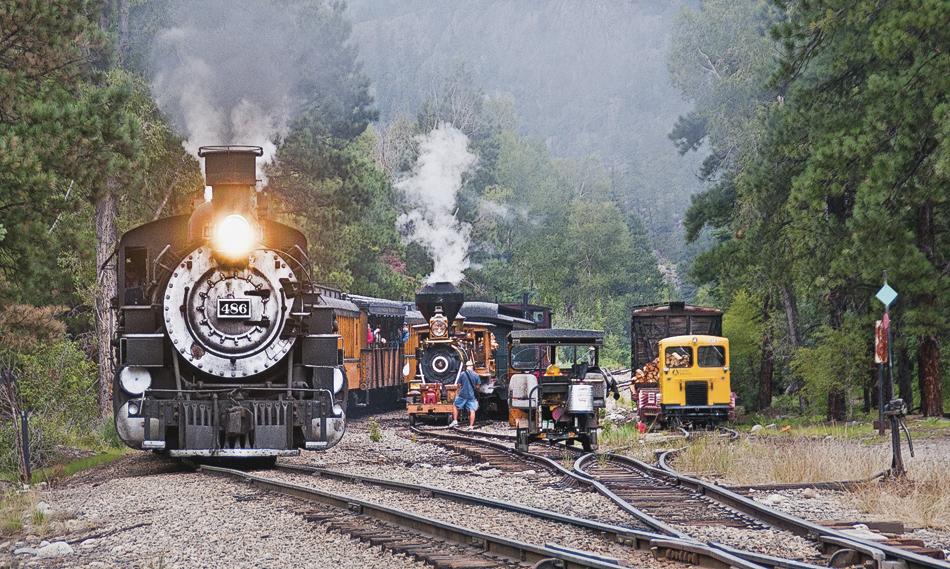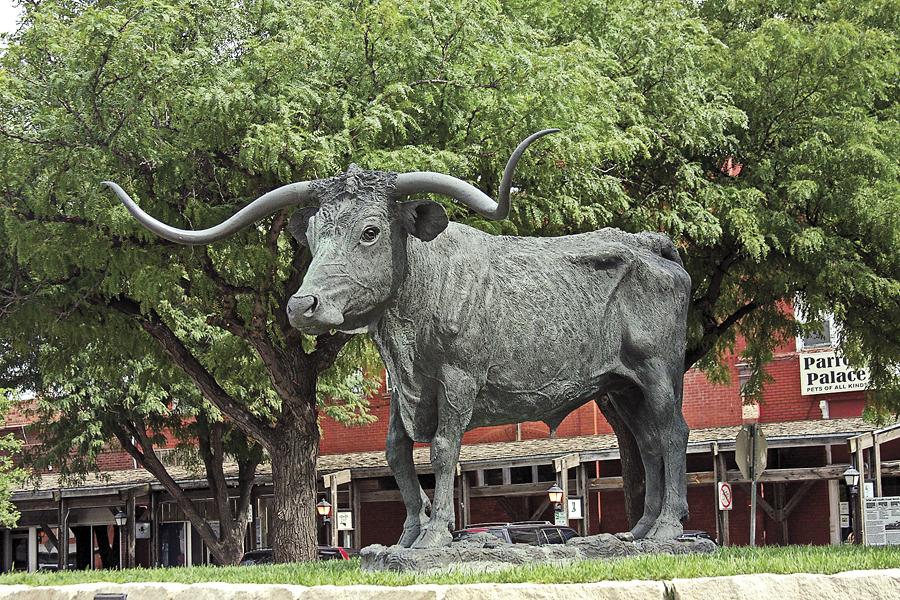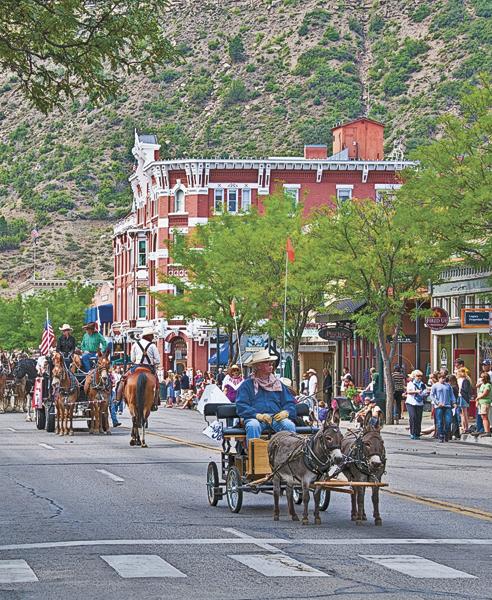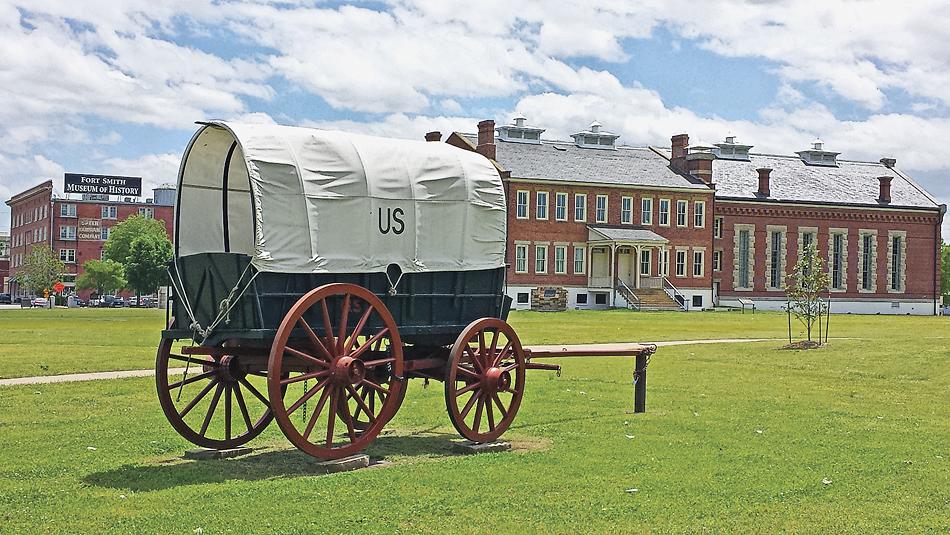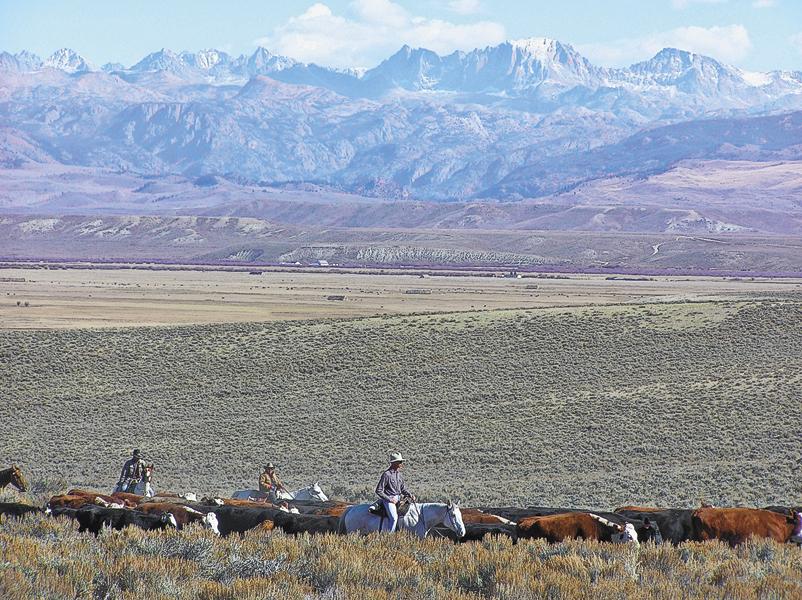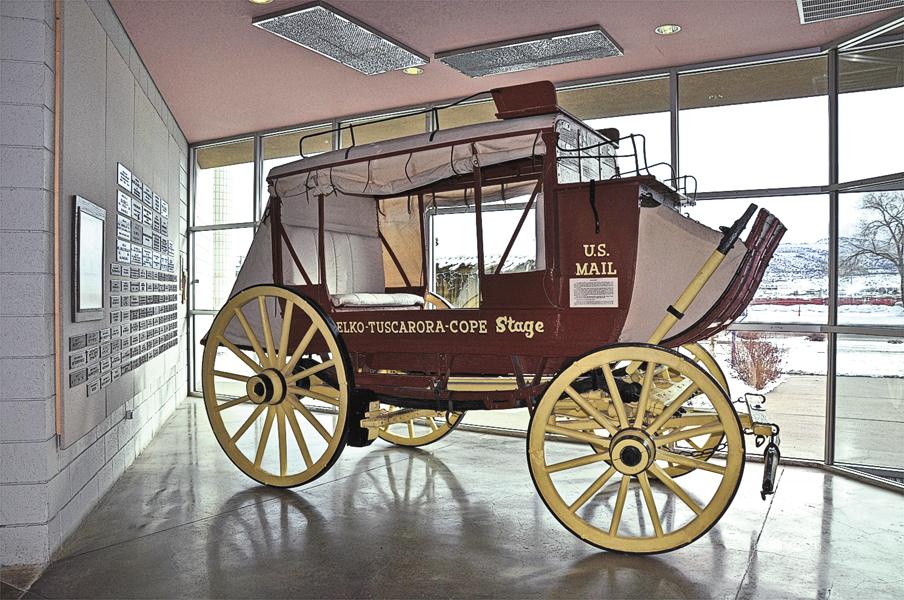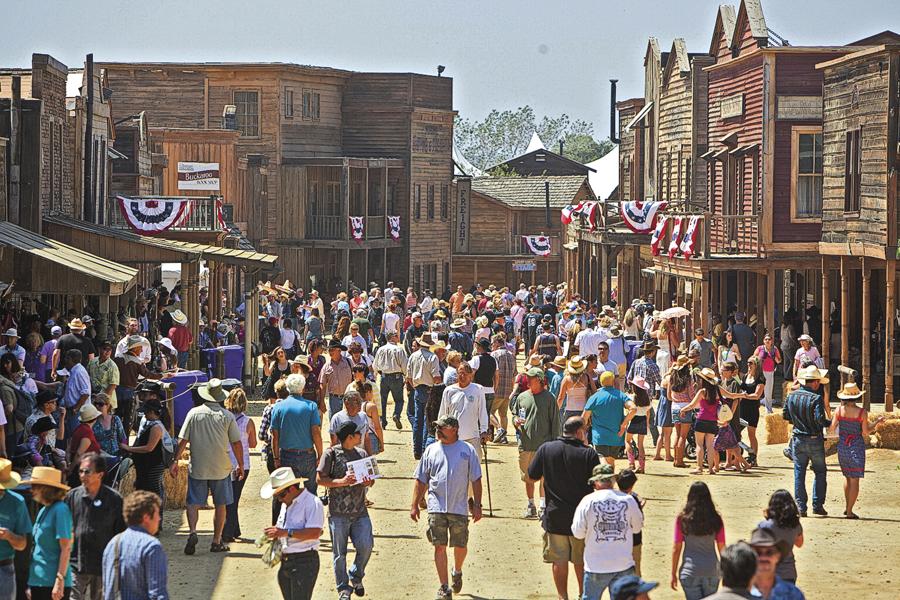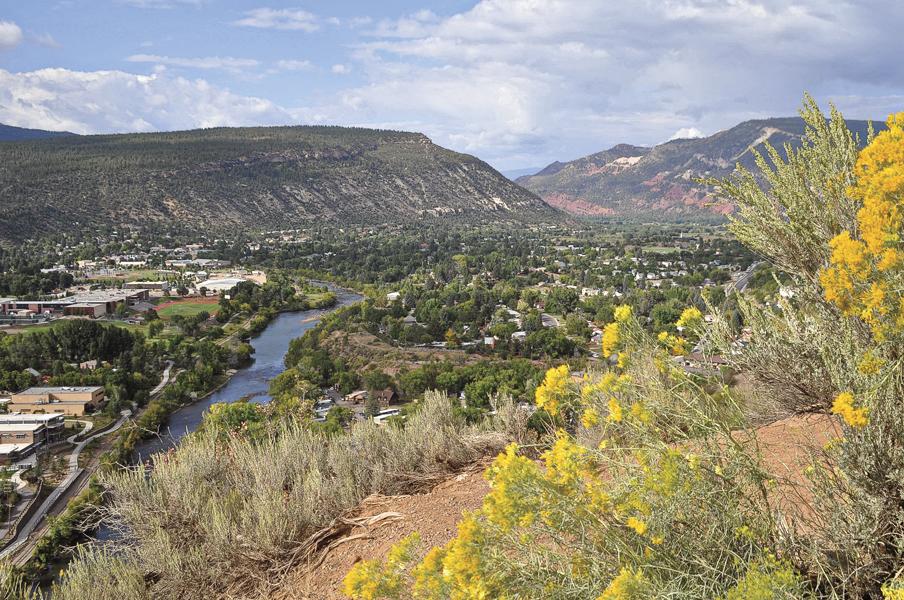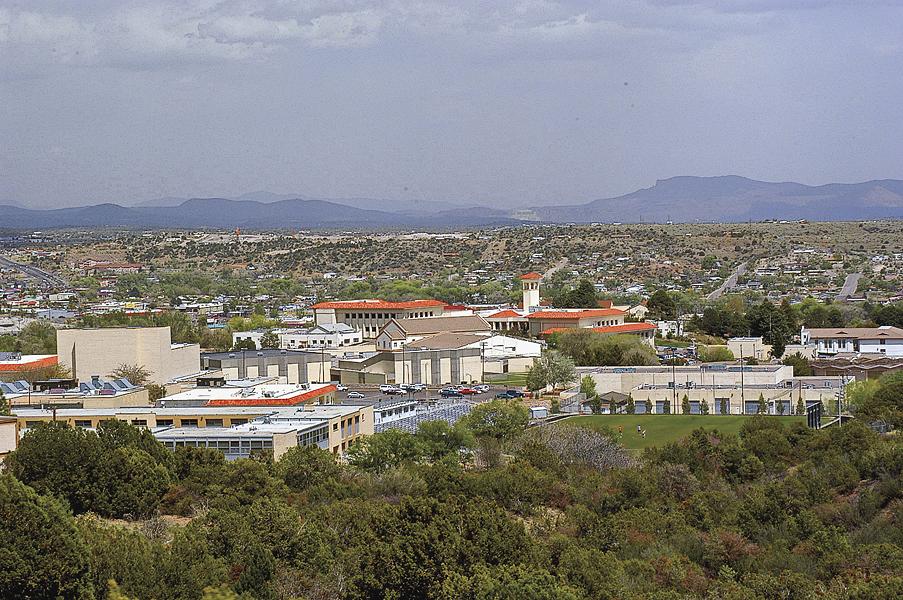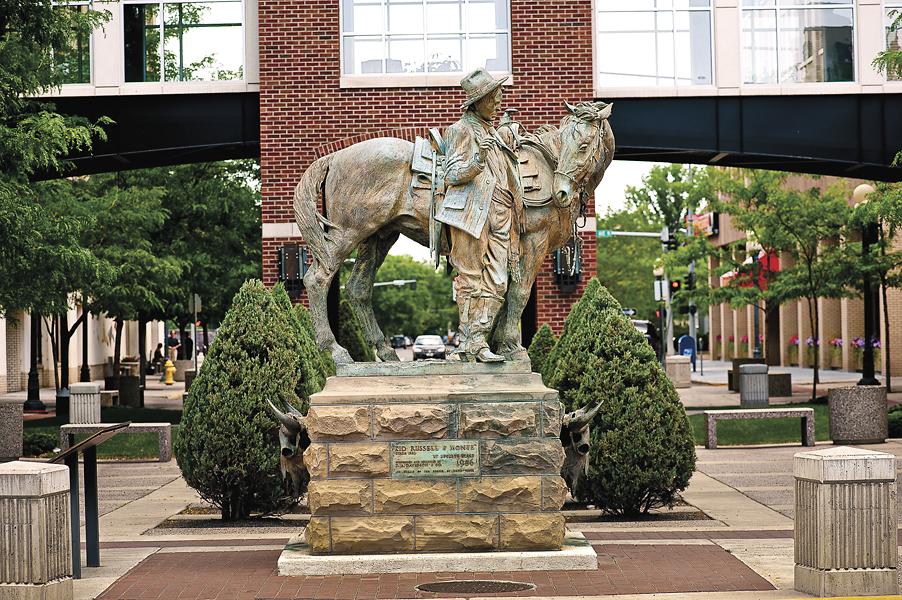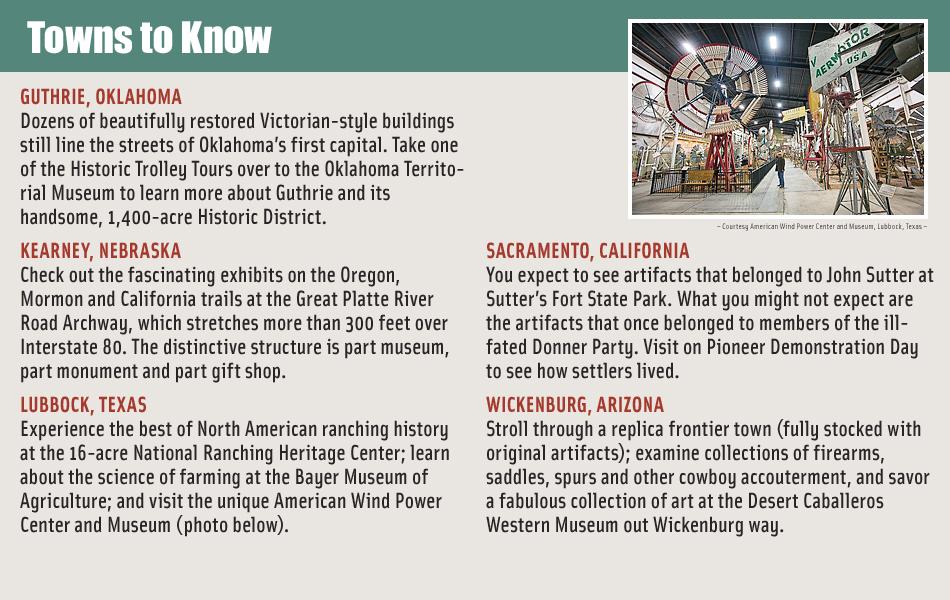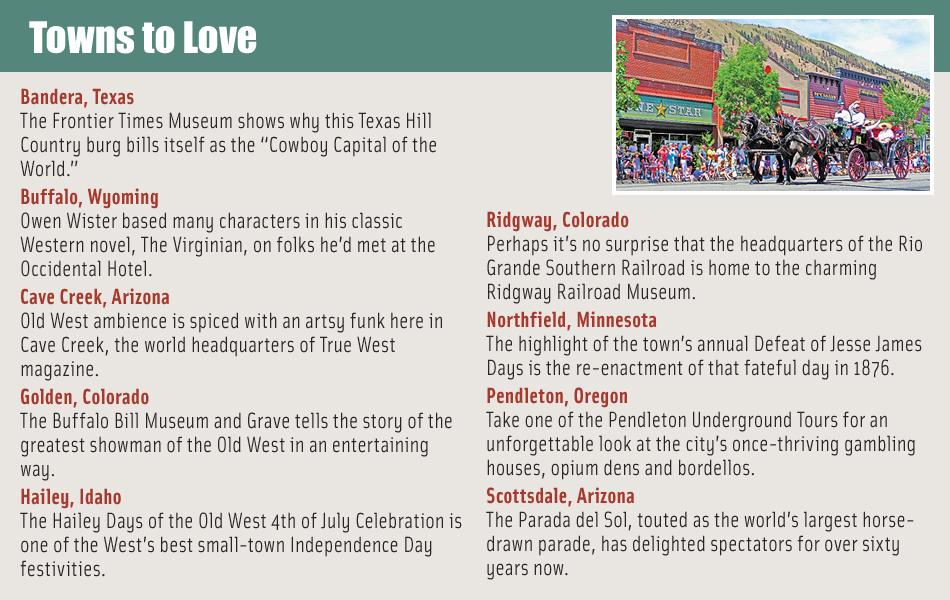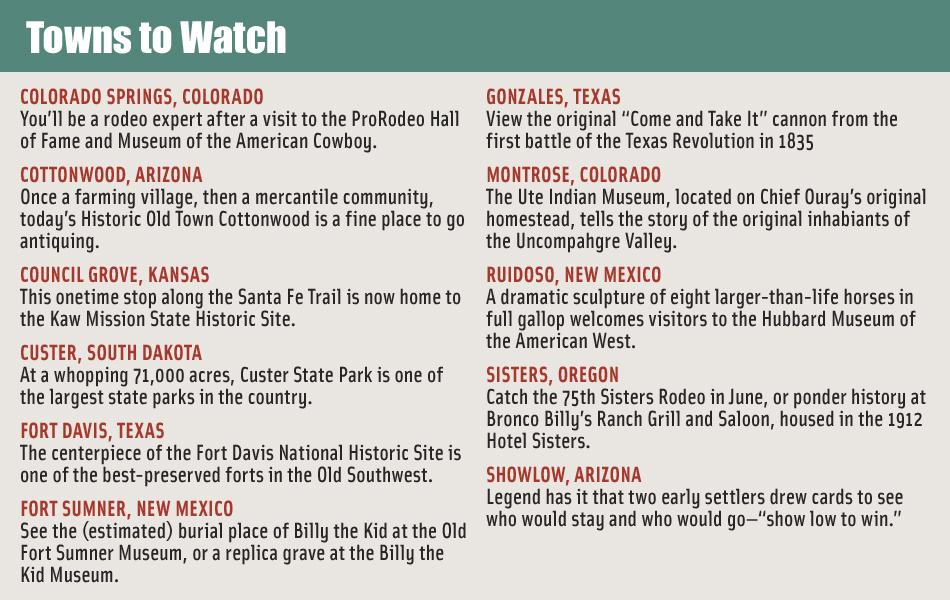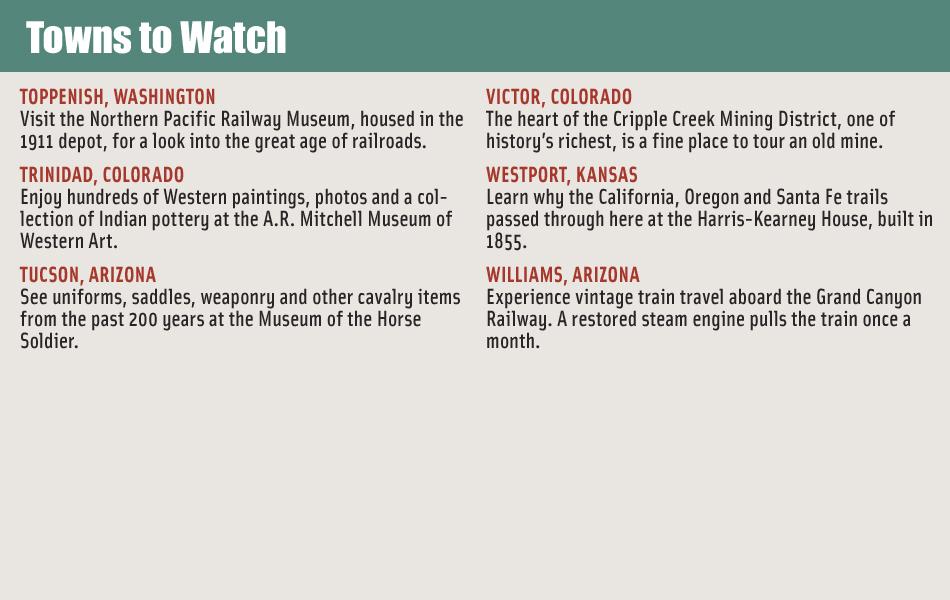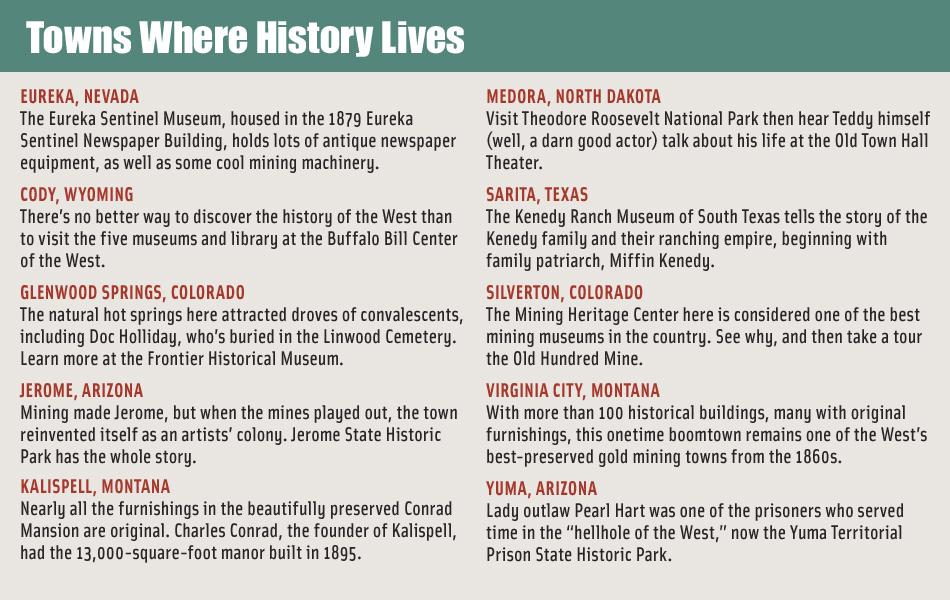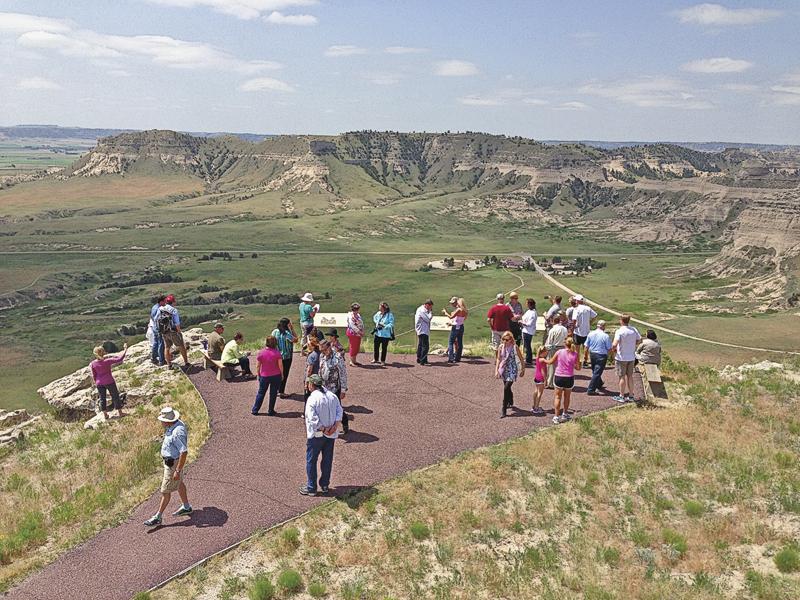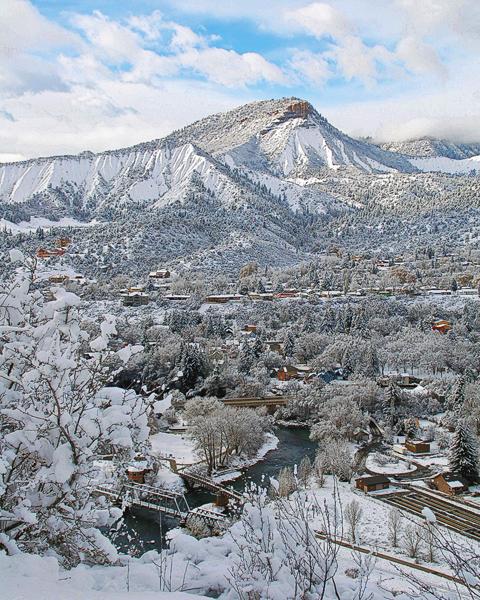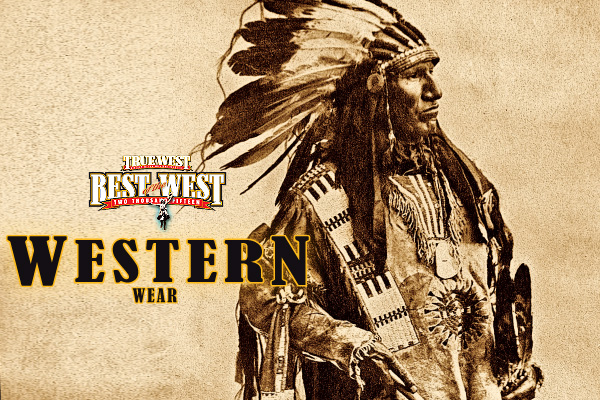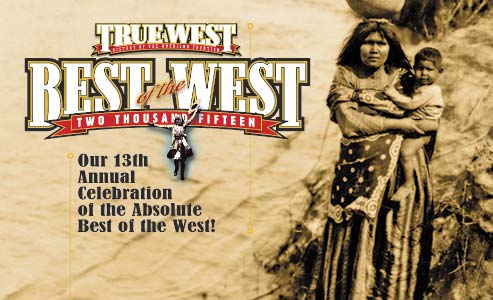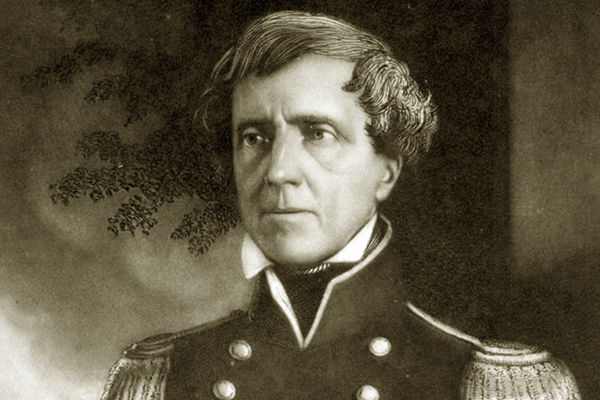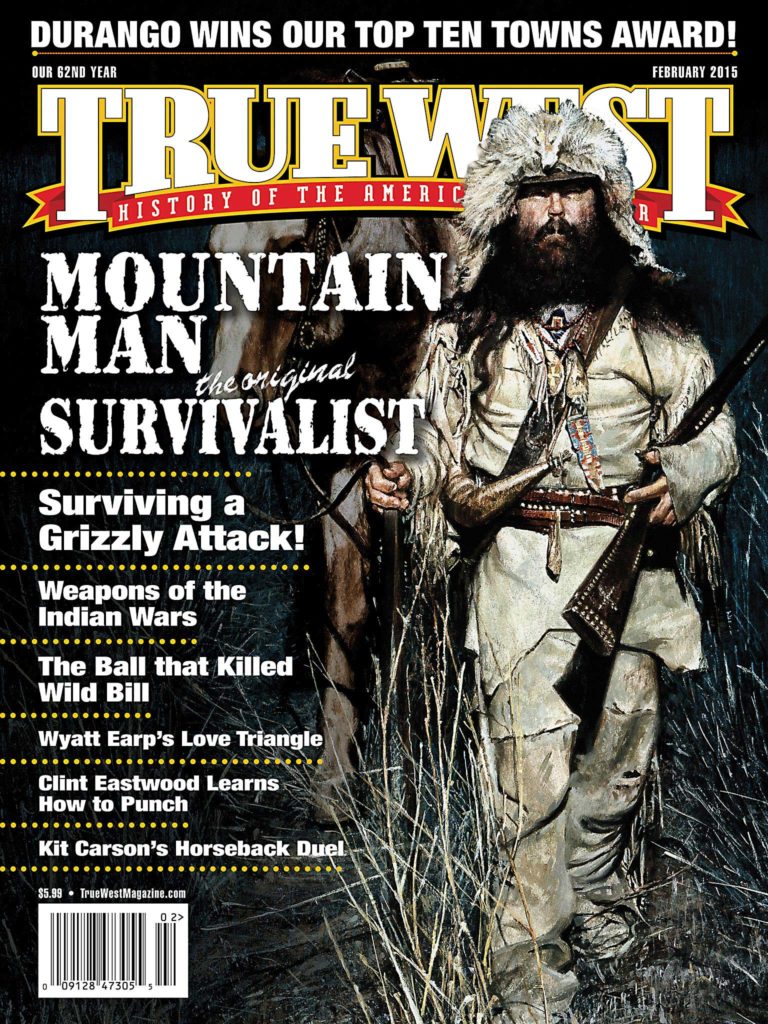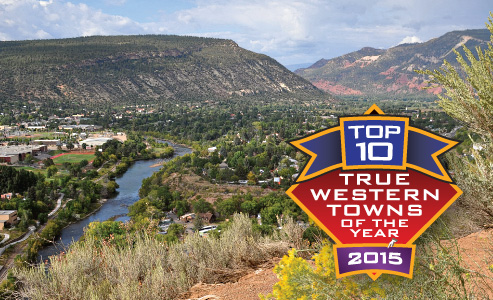
Top 10 True Western Towns – What makes a True Western Town?
Well, there’s history, of course. Whether it’s about lawmen and gunfighters, ranchers and sodbusters, or railroads and boomtowns, all True Western Towns have a story to tell.
But there’s more to it than that.
True Western Towns also have plenty of good folks to preserve their buildings, protect their historic sites and tell their stories.
We’re pleased to tip our hats to all the dedicated preservationists, fundraisers and volunteers who’ve worked so hard to promote the Old West heritage of their True Western Towns, especially those on our
Top 10 list for 2015.
Much obliged.
1 • Durango, Colorado
Sure, it was the gold that first lured prospectors into the San Juan Mountains, but it wasn’t until the Denver & Rio Grande Western Railroad reached Durango in 1881 that that the boomtown’s future was ensured.
Today Durango enjoys a vibrant cultural scene infused with its rich Western heritage. Where else can you ride a historic steam train, attend rodeos, visit such a variety of museums and restored historic structures, and take in a passel of cowboy and Western-themed festivals, all while staying in luxurious, century-old hotels?
No visit to Durango is complete without a ride aboard the steam-powered Durango-Silverton Railroad, which snakes about 45 miles north through the Animas River Valley to Silverton. This branch line was completed in July of 1882 and has been in continuous operation ever since. In the old days it hauled gold and silver ore out of the San Juans; today it hauls tourists—some 200,000 a year—into the breathtakingly beautiful mountains.
The Durango & Silverton Narrow Gauge Railroad Museum holds an array of fascinating exhibits, including a baggage car used in the classic Western Butch Cassidy and the Sundance Kid. Other historical must-sees include
the Animas Museum and the Durango Discovery Museum, housed in an 1893 coal-fired po wer plant.
Every year the town hosts an impressive number of Old West-style events, including the Durango Heritage Days, the True West Rail Fest, a Cowboy Poetry Gathering, Durango Fiesta Days and an assortment of rodeos. And it’s got an impressive number of century-old buildings and businesses. Heck, just among hotels you’ve got the Strater (built in 1887), the Rochester (1892) and the General Palmer (1898).
For their enthusiastic support of so many Western-themed activities and their determined efforts to preserve their Old West heritage, we’re proud to name Durango as our No. 1 True Western Town for 2015.
2 • Great Falls, Montana
Meriwether Lewis and William Clark may not have appreciated Great Falls as much as we do. After all, the Corps of Discovery had to make a long, arduous portage around them. Ever since then, though, visitors and residents alike have thrilled to the beauty of this series of waterfalls on the upper Missouri River.
Great Falls today is home to the C.M. Russell Museum Complex, named for none other than Charles Marion Russell, arguably the greatest Western artist of all time. Russell, originally from Missouri, moved to Great Falls in the 1890s with his wife, Nancy, and lived there until his death in 1926.
In addition to hundreds of drawings, paintings and sculptures by the master himself, the museum holds a slew of artworks from many other Western artists of the 19th and 20th centuries. There’s also the Browning Firearms Collection and a permanent exhibit on the bison and Northern Plains Indian culture. Russell’s house and log cabin studio—each a National Historic Landmark—are also on the grounds.
While in Great Falls you’ll want to check out the Lewis and Clark National Historic Trail Interpretive Center, as well as the History Museum (formerly known as the High Plains Heritage Center).
3 • Dodge City, Kansas
TV shows like Gunsmoke certainly helped perpetuate the legend of Dodge City. But the “Queen of the Cowtowns” earned its reputation with a real life history as gritty as any frontier town in the annals of the Old West.
Some of the biggest names of the era lived in, or passed through Dodge City over the years: Wyatt Earp, Bat Masterson and a gone-to-seed dentist named John Henry Holliday, just to name a few.
Nowadays the little town on the plains of Western Kansas is working hard to preserve its heritage with ongoing restoration projects at its historic train depot, the Victorian-age Hardesty House, the Santa Fe Trail Rut Site and other notable landmarks.
The Historic Trolley tour is a fine way to get the layout of the old town. Afterwards, take a stroll along the Dodge City Trail of Fame, where medallions and statues commemorate many of the town’s most celebrated citizens, both real and fictional. And don’t miss the legendary Boot Hill Museum.
Dodge City Days features parades and art shows and music galore. The highlight of the annual 10-day blowout comes with a thundering longhorn cattle drive down Wyatt Earp Boulevard to kick off the Dodge City Roundup PRCA Rodeo.
4 • Amarillo, Texas
What comes to mind when you hear the name Amarillo?
We think of cowboys and cattle, big skies and big steaks, rodeos and roundups and the wide-open West.
Amarillo celebrates a couple of special anniversaries this year: It’s the 75th anniversary of their American Quarter Horse Association and the 20th anniver-sary of the World Championship Ranch Rodeo. (It’s also the 50th anniversary of the outdoor musical drama TEXAS in nearby Palo Duro Canyon.)
The American Quarter Horse Hall of Fame and Museum honors the breed that best exemplifies the Old West. The AQHA also hosts Amarillo’s annual National Day of the Cowboy celebration.
The Kwahadi Museum of the American Indian holds a terrific array of artifacts, and its Kwahadi Indian Dancers have delighted audiences around the globe.
Amarillo hosts a slew of rodeos, including the Coors Cowboy Club Ranch Rodeo and the accompanying Polk Street Cattle Drive. The Working Ranch Cowboy Association (WRCA) not only honors modern cowboys, it produces the World Championship Ranch Bronc Riding and the World Championship Ranch Rodeo.
Hungry? Then head over to the Big Texan Steak Ranch for a free 72-ounce steak. All you have to do is finish it (along with all the fixin’s) in an hour.
5 • Fort Smith, Arkansas
You gotta love a place with a visitor center that was once the swankiest bordello in town. Today, more than a century past its heyday, Miss Laura’s Social Club still welcomes visitors to Fort Smith.
Much of the town’s Old West reputation comes from men such as U.S. District Judge Isaac Parker and tough-as-leather lawmen like Bass Reeves, who together brought law and order to the Indian Territory, then a haven for renegades, robbers and ne’er-do-wells.
Don’t miss the Fort Smith Museum of History, located in the 1907 Atkinson-Williams Warehouse Building, or the Fort Smith National Historic Site, which features the “Hell on the Border” jail and the courtroom of Isaac Parker, the “Hanging Judge” who abhorred capital punishment. Then swing by the Clayton House Museum for a look at the genteel side of the town’s history.
Fort Smith held the groundbreaking for its National U.S. Marshals Museum last fall. Among its many historical exhibits, the museum will feature a Hall of Honor recognizing all officers killed in the line of duty.
One of the highlights of the town’s Western Heritage Month comes during the Old Fort Days Rodeo Parade, when hundreds of horses, cowboys and horse-drawn wagons rumble down Garrison Avenue.
6 • Silver City, New Mexico
Tourists still come to Silver City to see where Billy the Kid was arrested for the first time, jailed for the first time and escaped for the first time.
While Billy may be the headliner here, there’s far more to this mountain community, founded in 1870 after a silver strike at nearby Chloride Flats.
Check out one of the world’s foremost collections of ancient Mimbres Indian pottery at the Western New Mexico University Museum, which also holds a splendid collection of historic photographs.
And don’t miss the Silver City Museum, housed in the 1881 H.B. Allman House. The stately Italianate structure once served as City Hall. The museum holds 17,000 photos, along with ancient Indian artifacts, 19th-century firearms and many other items representing the area’s mining and ranching heritage.
Then relax for a spell at the lovely park along the “Big Ditch,” which used to be the town’s Main Street until a flood rearranged things in 1902.
Nearby Fort Bayard was established by Company B of the 125th U.S. Colored Infantry in 1866. Many Buffalo Soldiers served at the fort, as did a young lieutenant by the name of John Joseph Pershing, later known as “Black Jack.”
7 • Elko, Nevada
Lots of Western towns trace their roots to ranching or mining or railroads. Plenty, like Elko, had ties to all three. Very few, though, share Elko’s historic connections with the Basque sheepherder culture.
The northeastern Nevada town is no Johnny-come-lately when it comes to celebrating its Western heritage–it’s hosted the National Cowboy Poetry Gathering for over 30 years, the National Basque Festival for over 50 years and the Silver State Stampede Rodeo (Nevada’s oldest) for over 100 years.
The Pioneer Hotel, a 19th-century landmark, is home to the Western Folklife Center, while the historic Sherman Station, built in 1903, serves as the town’s chamber of commerce and visitors center.
Take time to visit the Northeastern Nevada Museum. In addition to its impressive assortment of Indian and Old West artifacts, the museum holds one of the world’s largest collections of works by Western artist Will James, as well as several etchings and watercolors by Edward Borein.
You’ll learn more about why, and how, so many pioneers moved west when you visit the California Trails Interpretive Center. Then enjoy a platter of authentic Basque cuisine at the Star Hotel & Restaurant, which opened in 1910 as a boardinghouse for sheepherders.
8 • Scottsbluff/Gering, Nebraska
Who knows how many emigrants passed by the iconic rock formations known as Scotts Bluff and Chimney Rock as they slogged along the Oregon Trail?
Today’s Scottsbluff (the town is one word, the rock formation is two) is home to a number of fascinating historical attractions. Chief among them is, of course, Scotts Bluff National Monument, which tells the stories of the settlers on the Oregon, Mormon and California trails. (Close by you can still see the ruts their wagon wheels carved in the prairie.) The center also has many paintings by renowned artist and photographer William Henry Jackson. You’ll also want to visit the nearby Robidoux Pass National Historic Landmark and Trading Post.
Just a few miles away you’ll find Chimney Rock National Historic Site, which has a fine assortment of exhibits relating to life along the Oregon Trail.
For a taste of pioneer life, check out the sod house at the Legacy of the Plains Museum, which explains early farming methods in the North Platte Valley.
Together Scottsbluff (on the north side of the North Platte River) and Gering (on the south side) host the annual Oregon Trail Days, the longest, continuously running celebration in Nebraska.
9 • Pinedale, Wyoming
Mountain men like Jim Bridger and Jedediah Smith played a central role in the exploration of the vast, uncharted territory between the Missouri River and the Pacific Coast.
Pinedale’s Museum of the Mountain Man is something of a shrine to these rugged, resourceful and fiercely independent men. The museum also features a number of Indian exhibits, including a rare buffalo-hide tipi, complete with buffalo robes, a hand-painted drum, pipes and other artifacts, giving visitors an awe-inspiring glimpse into Indian life when the Old West was still young.
Firearms enthusiasts will enjoy the museum’s collection of over 100 impressive collection of more than 100 commemorative Winchester rifles,, shotguns, revolvers and pistols Be sure to check out the .40-caliber half-stock rifle with the engraving “J. Bridger 1853.” Look, too, for the 17th-century sheep-horn bow, once a prized possession in the Shoshone culture. This specimen, one of the oldest authenticated, was found in the nearby Gros Ventre mountain range.
You can attend the 80th annual Green River Rendezvous this July, or walk along the route of the historic Lander Trail at the New Fork River Crossing Historical Park, which celebrated its grand opening last June.
10 • Santa Clarita, California
It’s not always easy to separate the myths of the Old West from the reality, especially in a place like Santa Clarita. Movies and TV shows shot here created many of the legends that, in turn, still sustain the world’s fascination with the authentic Old West.
Melody Ranch Motion Picture Studio opened in 1915. Over the years its 22-acre back lot has been used to shoot such classics as The Lone Ranger and The Magnificent Seven. More recently, shows like Deadwood and Django Unchained have been filmed here. Beginning in 1994, the ranch has hosted the Santa Clarita Cowboy Festival every April.
William S. Hart, the first Western-movie superstar, built a magnificent Spanish Colonial Revival-style home here in 1925. Today it holds the William S.
Hart Museum, where you’ll find mementos from early Hollywood, an assortment of Indian artifacts and works by renowned Western artists Charles M. Russell, Frederic Remington and Joe De Yong.
Check out the Saugus Train Station, built in 1887, at the Heritage Junction Historical Park. Or take a stroll along the Walk of Western Stars, which honors legends like Roy Rogers, Dale Evans and John Wayne. Afterwards, have a bite at the Saugus Café, which opened in 1886. It’s the oldest operating restaurant in Los Angeles County.
• Towns to Love
The Frontier Times Museum shows why this Texas Hill Country burg bills itself as the “Cowboy Capital of the World.”
Buffalo, Wyoming
Owen Wister based many characters in his classic Western novel, The Virginian, on folks he’d met at the Occidental Hotel.
Cave Creek, Arizona
Old West ambience is spiced with an artsy funk here in Cave Creek, the world headquarters of True West magazine.
Golden, Colorado
The Buffalo Bill Museum and Grave tells the story of the greatest showman of the Old West in an entertaining way.
Hailey, Idaho
The Hailey Days of the Old West 4th of July Celebration is one of the West’s best small-town Independence Day festivities.
Ridgway, Colorado
Perhaps it’s no surprise that the headquarters of the Rio Grande Southern Railroad is home to the charming Ridgway Railroad Museum.
Northfield, Minnesota
The highlight of the town’s annual Defeat of Jesse James Days is the re-enactment of that fateful day in 1876.
Pendleton, Oregon
Take one of the Pendleton Underground Tours for an unforgettable look at the city’s once-thriving gambling houses, opium dens and bordellos.
Scottsdale, Arizona
The Parada del Sol, touted as the world’s largest horse-drawn parade, has delighted spectators for over sixty years now.
• Towns Where History Lives
The Eureka Sentinel Museum, housed in the 1879 Eureka Sentinel Newspaper Building, holds lots of antique newspaper equipment, as well as some cool mining machinery.
Cody, Wyoming
There’s no better way to discover the history of the West than to visit the five museums and library at the Buffalo Bill Center of the West.
Glenwood Springs, Colorado
The natural hot springs here attracted droves of convalescents, including Doc Holliday, who’s buried in the Linwood Cemetery. Learn more at the Frontier Historical Museum.
Jerome, Arizona
Mining made Jerome, but when the mines played out, the town reinvented itself as an artists’ colony. Jerome State Historic Park has the whole story.
Kalispell, Montana
Nearly all the furnishings in the beautifully preserved Conrad Mansion are original. Charles Conrad, the founder of Kalispell, had the 13,000-square-foot manor built in 1895.
Medora, North Dakota
Visit Theodore Roosevelt National Park then hear Teddy himself (well, a darn good actor) talk about his life at the Old Town Hall Theater.
Sarita, Texas
The Kenedy Ranch Museum of South Texas tells the story of the Kenedy family and their ranching empire, beginning with family patriarch, Miffin Kenedy.
Silverton, Colorado
The Mining Heritage Center here is considered one of the best mining museums in the country. See why, and then take a tour the Old Hundred Mine.
Virginia City, Montana
With more than 100 historical buildings, many with original furnishings, this onetime boomtown remains one of the West’s best-preserved gold mining towns from the 1860s.
Yuma, Arizona
Lady outlaw Pearl Hart was one of the prisoners who served time in the “hellhole of the West,” now the Yuma Territorial Prison State Historic Park.
• Towns to Watch
Colorado Springs, Colorado
You’ll be a rodeo expert after a visit to the ProRodeo Hall of Fame and Museum of the American Cowboy.
Cottonwood, Arizona
Once a farming village, then a mercantile community, today’s Historic Old Town Cottonwood is a fine place to go antiquing.
Council Grove, Kansas
This onetime stop along the Santa Fe Trail is now home to the Kaw Mission State Historic Site.
Custer, South Dakota
At a whopping 71,000 acres, Custer State Park is one of the largest state parks in the country.
Fort Davis, Texas
The centerpiece of the Fort Davis National Historic Site is one of the best-preserved forts in the Old Southwest.
Fort Sumner, New Mexico
See the (estimated) burial place of Billy the Kid at the Old Fort Sumner Museum, or a replica grave at the Billy the Kid Museum.
Gonzales, Texas
View the original “Come and Take It” cannon from the first battle of the Texas Revolution in 1835.
Montrose, Colorado
The Ute Indian Museum, located on Chief Ouray’s original homestead, tells the story of the original inhabiants of the Uncompahgre Valley.
Ruidoso, New Mexico
A dramatic sculpture of eight larger-than-life horses in full gallop welcomes visitors to the Hubbard Museum of the American West.
Sisters, Oregon
Catch the 75th Sisters Rodeo in June, or ponder history at Bronco Billy’s Ranch Grill and Saloon, housed in the 1912 Hotel Sisters.
Showlow, Arizona
Legend has it that two early settlers drew cards to see who would stay and who would go—“show low to win.”
Toppenish, Washington
Visit the Northern Pacific Railway Museum, housed in the 1911 depot, for a look into the great age of railroads.
Trinidad, Colorado
Enjoy hundreds of Western paintings, photos and a collection of Indian pottery at the A.R. Mitchell Museum of Western Art.
Tucson, Arizona
See uniforms, saddles, weaponry and other cavalry items from the past 200 years at the Museum of the Horse Soldier.
Victor, Colorado
The heart of the Cripple Creek Mining District, one of history’s richest, is a fine place to tour an old mine.
Westport, Kansas
Learn why the California, Oregon and Santa Fe trails passed through here at the Harris-Kearney House, built in 1855.
Williams, Arizona
Experience vintage train travel aboard the Grand Canyon Railway. A restored steam engine pulls the train once a month.
Photo Gallery
The American Quarter Horse Hall of Fame and Museum (left) is headquartered in Amarillo. Other major museums in the Panhandle city include the Kwahadi Museum of the American Indian and the Panhandle-Plains Historical Museum, in nearby Canyon, Texas.
– Courtesy Amarillo Convention and Visitor Council –
Jasper D’Ambrosi’s bronze depicting a longhorn steer, titled El Capitan, greets visitors to Dodge City, Kansas, on the Trail of Fame that commemorates the four million head of cattle driven from Texas to the Kansas railhead from 1875 to 1886.
– Courtesy Dodge City CVB –
The Fort Smith Museum of History is the centerpiece of the Fort Smith Historic Site, which includes Judge Isaac Parker’s courtroom.
– Courtesy Fort Smith National Historic Site –
The Wind River Range in west-central Wyoming frames the Eastern horizon of Pinedale, which annually celebrates the Green River Drift Cattle Drive, one of the oldest drives in the nation.
– Courtesy VisitPinedale –
The Northeastern Nevada Museum’s History Gallery provides visitors with an introduction to numerous aspects of the region’s history, including transportation, such as stagecoaches, used to help settle the Great Basin.
– Courtesy TravelNevada –
For a century the Melody Ranch Motion Picture Studio has been a favorite for Western filmmakers and, since 1994, the Santa Clarita Cowboy Festival has celebrated its glorious film-production past.
– Courtesy City of Santa Clarita –
Durango’s annual festivals, parades, restaurants and hotels celebrate the town’s Western heritage. The Durango & Silverton Narrow Gauge Railroad to Silverton through the San Juan Mountains is fun for all ages—in all seasons.
– All Photos by Yvonne Lashmett/Courtesy Durango & Silverton Narrow Gauge Railroad –
Founded in 1870, Silver City, New Mexico, is home to Western New Mexico University Museum, an excellent place to begin a tour of the historic community with a cultural history dating back thousands of years.
– Courtesy New Mexico Tourism Department –
Today visitors to Charles M. Russell’s longtime home in Great Falls, Montana, will discover numerous Western sites celebrating the upper Missouri River town, including the C.M. Russell Museum Complex, and public art, such as Buckeye Blake’s Kid Russell and Monte in downtown.
– Donnie Sexton/Courtesy Montana Office of Tourism –
– Courtesy C. Waller –
Western heritage is celebrated in the Oregon Trail town of Scottsbluff, Nebraska, in many ways, including at the Scotts Bluff National Monument, where visitors can view Scotts Bluff and Chimney Rock from an overlook.
– Courtesy Scottsbluff/Gering –
https://truewestmagazine.com/true-west-best-of-the-west-heritage-travel/


